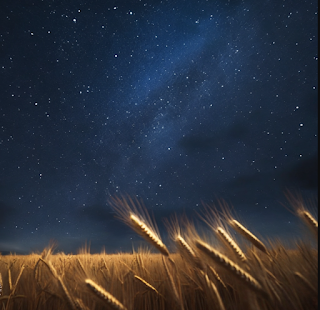Search Blog
Hit enter to search or ESC to close
Trending Now
Parshas Vayelech - The Secret Treasure of the Universe
- Get link
- X
- Other Apps
Showing posts from 2019
Posts
Parshas Vayeishev - A Dream of Numbers and Symbols
In Parshas Vayeishev, Yosef's brothers refer to him as "Baal Hachalomot". Translations can range from the extravagant, "Master of Dreams" to the derisive, "Dreamer". But Yosef is indeed defined by his dreams. The era of direct interaction with G-d has temporarily ended. Of all the sons, Yosef is the one chosen to receive messages, and they are cryptic visions filled with symbols, suns, stars, moons, birds, cows, wheat, that are ripe with potent symbolism. His father Yaakov had been the first to communicate with G-d more heavily through symbols, a ladder, animals in the field, but he had received verbal messages of plain meaning. Yosef does not appear to. Though Yosef is defined by dreams, he only receives two of his own, as a teenager. The latter two sets of dreams are those of others, Egyptian ministers and Pharaoh, interpreted by him. These dreams are divided into three pairs of two. Each dream has a counterpart. Yosef first dreams two dreams....
- Get link
- X
- Other Apps
Parshas Lech Lecha - Love and Faith
Parshas Lech Lecha begins with a command to Avraham to undertake a journey. The biblical patriarch's journey is not merely in space. All journeys in the Torah are also journeys of faith. The physical act of putting one foot in front of another is also a spiritual and emotional experience culminating in the journey through the desert after the redemption from Egyptian slavery and the exile of the Jewish people. The biblical patriarch is being commanded to go on a spiritual journey of faith. This is not a mere mental exercise. Nor is it a physical one. Or even a personal one. If it were, there would be no reason for us to be reviewing his story all these many thousands of years later. Instead, what Avraham finds on that journey has transformed the world and brought into being the world that we live in today. In the parsha, G-d makes one of a number of promises to Avraham, in this one, right before the Brit Bein HaBetarim, the Covenant of Parts, and after the battle with the fou...
- Get link
- X
- Other Apps
Purim and the Redemption of the Tree of Knowledge
"Haman min ha'Torah minayin?" The gemara famously asks. Where in the Torah do we see Haman? The unexpected answer to this odd question is, "Hamin haetz". The question that G-d asks Adam and Chava. "Did you eat from the tree I forbade you to eat from?" What's the connection between the two very different parts of the Torah? Bereishis comes at the beginning of the Torah. The story of Purim comes at the end. What is the connection between the Etz HaDaat, the tree of knowledge, and Purim? Purim's most famous mitzvah is drinking ad de lo today, until you can't tell apart Haman and Mordechai. One view is that the fruit of the tree of knowledge was the grapevine. Wine is also the driving force behind Purim, Ahasverosh gets drunk, disposes of Vashti, marries Esther, gets drunk again and disposes of Haman. Wine is the classic example of the Etz HaDaat. It mixes together good and evil. It unleashes the good and t...
- Get link
- X
- Other Apps





